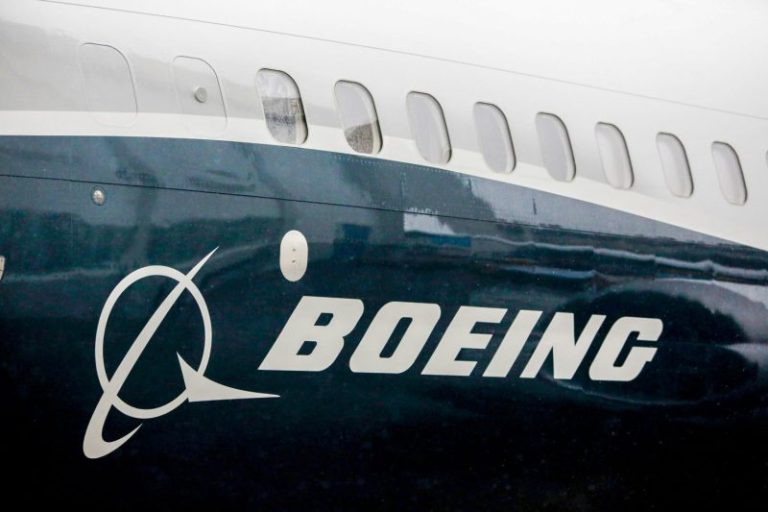When Tim Cook gifted President Donald Trump a gold and glass plaque last month, the Apple CEO was hailed by Wall Street for his job managing the iPhone-maker’s relationship with the White House.
Cook, Wall Street commentators said, had largely navigated the threat of tariffs on Apple’s business successfully by offering Trump an additional $100 billion U.S. investment, a win the president could tout on American manufacturing. But despite the 24-carat trophy Cook handed Trump, the true costs of those tariffs may finally show up for Apple customers later this month.
“Thank you all, and thank you President Trump for putting American innovation and American jobs front and center,” Cook said at the event, which brought Apple’s total planned spend to $600 billion in the U.S. over the next five years. Trump, at the event, said that Apple would be exempt from forthcoming tariffs on chips that could double their price.
But as Apple prepares to announce new iPhones on Tuesday, some analysts are forecasting the company to raise prices on its devices even after all Cook has done to avoid the worst of the tariffs.
“A lot of the chatter is: Will the iPhone go up in price?” said CounterPoint research director Jeff Fieldhack.
Although smartphones haven’t seen significant price increases yet, other consumer products are seeing price increases driven by tariffs costs, including apparel, footwear, and coffee. And the tariffs have hit some electronics, notably video games — Sony, Microsoft and Nintendo, have raised console prices this year in the U.S.
Some Wall Street analysts are counting on Apple to follow. Jeffries analyst Edison Lee baked in a $50 price increase into his iPhone 17 average selling price projections in a note in July. He’s got a hold rating on Apple stock.
Goldman Sachs analysts say that the potential for price increases could increase the average selling price of Apple’s devices over time, and the company’s mix of phones have been skewing toward more expensive prices.
Analysts expect Apple to release four new iPhone models this month, which will likely be named the “iPhone 17” series. Last year, Apple released four iPhone 16 models: the base iPhone 16 for $829, the iPhone 16 Plus at $899, the iPhone 16 Pro at $999 and the iPhone 16 Pro Max at $1,199.
This year, many supply chain watchers expect Apple to replace the Plus model, which has lagged the rest of the lineup, with a new, slimmer device that trades extra cameras and features for a thinner, lighter body.
The “thinner, lighter form factor may drive some demand interest,” wrote Goldman analysts, but tradeoffs like battery life may make it hard to compete with Apple’s entry-level models.
Analysts have said they expect the slim device to cost about $899, similar to how much the iPhone 16 Plus costs, but they haven’t ruled out a price bump. That would still undercut Samsung’s thin Galaxy Edge, which debuted earlier this year at $1,099.
Apple did not respond to a request for comment.
When Trump announced sweeping tariffs on China and the rest of the world in February, it seemed like Apple was in the crosshairs.
Apple famously makes the majority of its iPhones and other products in China, and Trump was threatening to place tariffs that could double Apple’s costs or more. Some of Trump’s so-called “reciprocal” tariffs would hit countries like Vietnam and India where Apple had hedged its production bets.
But seven months later, Apple has weathered the tariffs better than many had imagined.
The U.S. government has paused the most draconian Chinese tariffs several times, smartphones got an exemption from tariffs and Cook in May told investors that the company was able to rearrange its supply chain to import iPhones to the U.S. from India, where tariffs are lower.
Cook also successfully leaned on his relationship with Trump, visiting him in White House and taking his side in August, when Cook presented the shiny keepsake to Trump. That commitment bolstered Trump’s push to bring more high-tech manufacturing to the U.S. In exchange, Trump said he would exempt Apple from a forthcoming semiconductor tariff, too. And Trump’s IEEPA tariffs were ruled illegal in late August, although they are still in effect.
Apple hasn’t completely missed the tariff consequences. Cook said the company spent $800 million on tariff costs in the June quarter, mainly due to the IEEPA-based tariffs on China. That was less than 4% of the company’s profit, but Apple warned it could spend $1.1 billion in the current quarter on tariff expenses.
After months of eating the tariff costs itself, Apple may finally pass those costs to consumers with this month’s launch of the iPhone 17 models.
Apple has been judicious about hardware price increases in the U.S. The smaller Pro phone, for example, hasn’t gotten a price increase since its debut in 2017, holding at $999. But Apple has made some price changes.
The company raised the price of its entry level phones from $699 to $829 in 2020. And in 2022 when Apple eliminated the smaller iPhone Mini that started at $699, the company replaced it with the bigger-screen Plus that costs $899. The Pro Max also got a hike in 2023 when Apple bumped it from $1,099 to its current price of $1,199.
If Apple does increase prices on its phones this year, don’t expect management to blame tariffs.
The average selling price of smartphones around the world is rising, according to IDC. The price of smartphone components, such as the camera module and chips, have been increasing in recent years.
Apple is much more likely to focus on highlighting its phones’ new features and quietly note the new price. Analysts expect the new iPhones to have larger screens, increased memory and new, faster chips for AI.
“No one’s going to come out and say it’s related to tariffs,” said IDC analyst Nabila Popal.
One way that Apple could subtly raise prices is by eliminating the entry-level version of its phones, forcing users to upgrade to get more storage at a higher starting price. Apple typically charges $100 to double the amount of the iPhone’s storage from 128GB to 256GB.
That’s what JPMorgan analysts expect Apple to announce next week.
They forecast that Apple will leave the prices of the entry level and high-end Pro Max models alone, but they wrote that they expect the company to eliminate the entry-level version of the Pro, meaning that users will have to pay $1,099 for an iPhone 17 Pro that has more starting-level storage than its predecessor. That’s how Apple raised the price of the entry-level Pro Max in 2023.
“However, with Apple’s recent announcements relative to investments in US, the assumption is that the company will largely be shielded from tariffs, driving expectations for limited pricing changes except for those associated with changes in the base storage configuration for the Pro model,” wrote JP Morgan analyst Samik Chatterjee.
When Cook was asked about potential Apple price increases on an earnings call in May, he said there was “nothing to announce.”
“I’ll just say that the operational team has done an incredible job around optimizing the supply chain and the inventory,” Cook said.
This post appeared first on NBC NEWS










